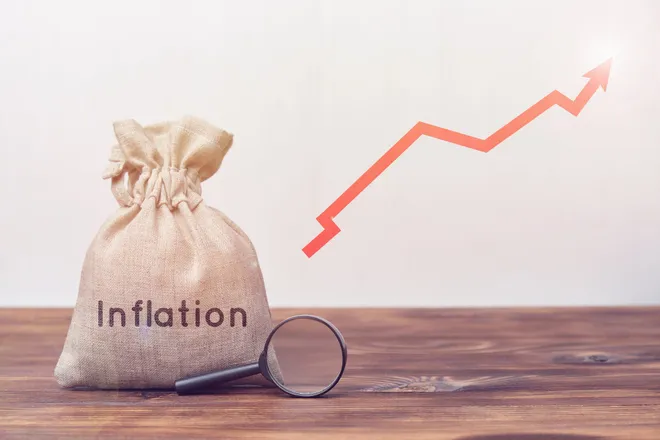The hidden price of inflation: High costs disrupt life in more ways than we can see
High inflation doesn’t just leave you with less money in your wallet and struggling to pay bills.
It also imposes long-term costs on society and the economy by forcing consumers to invest less, negotiate wages more frequently and devote time and energy to coping with rapidly rising prices, according to a new paper by the Federal Reserve Bank of Cleveland.
The upshot: skewed markets and an even greater loss of purchasing power for consumers, says the analysis by Cleveland Fed senior research economist Jean-Paul L’Huillier Bowles and research analyst Martin DeLuca.
"These frictions….suggest that inflation imposes significant costs on society," the authors argue in the paper, titled, “The Long-Run Costs of Higher inflation.”
In an economy without such disruptions, prices are determined by the law of supply and demand: If demand for a good or service outstrips the supply, prices will rise, and vice versa.
Protect your assets: Best high-yield savings accounts of 2023
Annual inflation has fallen since hitting a 40-year high of 9.1% in June 2022 but, at 3.7% in September, is still well above the Federal Reserve’s 2% target.

Here are some of the hidden long-run costs of high inflation, according to the Cleveland Fed:
Reduced wealth
To deal with higher prices, consumers must hold more cash and keep less money in a stock or mutual fund. That chips away at their wealth and forces them to devote time and effort to figuring out how much cash to hold, resources “that could be used elsewhere,” the report says.
Sticky wages and taxes
As prices rise, employees are typically forced to ask for raises. However, some workplaces may discourage staffers from asking for more money, causing them to lose purchasing power. That can have ripple effects across the economy: As workers buy fewer goods and services, the retailers or service providers that would have benefitted from their purchases also cut their spending.
Also, some taxes, such as for capital gains on stocks, may climb as a result of inflation, causing investors to incur a higher tax bill even though the inflation-adjusted value of the stock hasn’t changed. That could cause people to change their investments, creating more market distortions.
Sticky prices
Similarly, it may be easier for some businesses to lift prices than others. A gas station can push a button to change a digital sign while a supermarket may have to manually update prices on thousands of items.
As a result, businesses with lower costs may change prices more frequently, skewing, or distorting, consumers’ buying decisions.
Lenders fall behind
Interest rates may not keep pace with inflation. So a lender, such as a bank, that agrees to a 5% interest rate effectively loses money, or purchasing power, if inflation winds up being 10%. Such financial institutions will likely scale back lending, imposing additional costs on society.
U.S. retirement grade: So-soHow does the U.S. retirement system stack up against other countries? Just above average.
Stocks vs. real estate
During high inflation, real estate typically rises in value but stocks may decline or stay flat because higher costs trim companies’ profits. That could cause investors to shift money from stocks to real estate, further increasing companies’ cost of raising capital and sparking additional price increases.
What’s more, businesses with less cash may invest less in research and development, hurting productivity, or output per worker, and lowering wages.
Disclaimer: The copyright of this article belongs to the original author. Reposting this article is solely for the purpose of information dissemination and does not constitute any investment advice. If there is any infringement, please contact us immediately. We will make corrections or deletions as necessary. Thank you.







